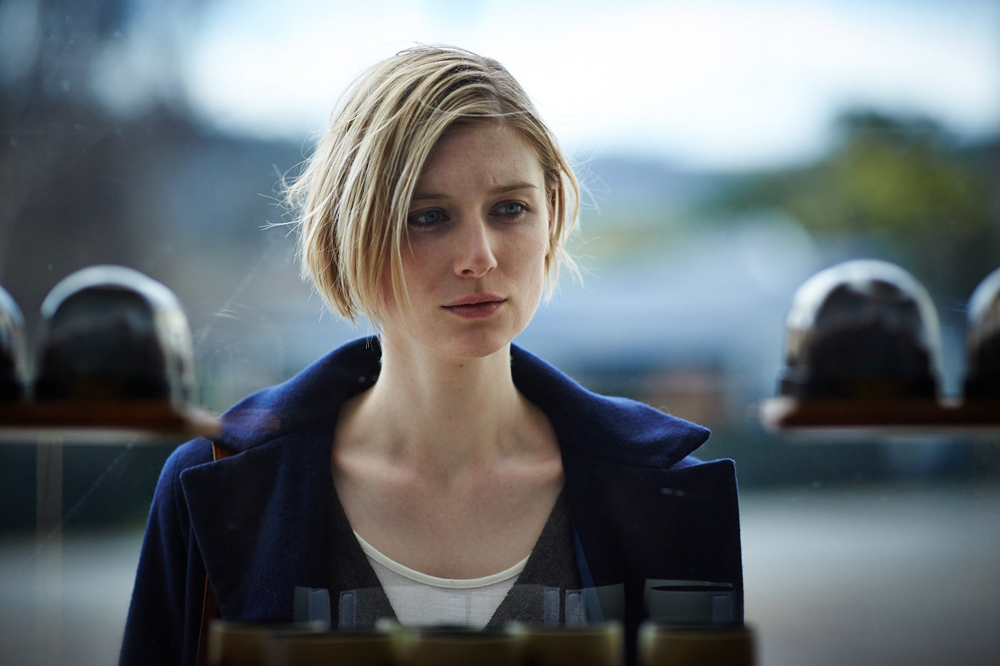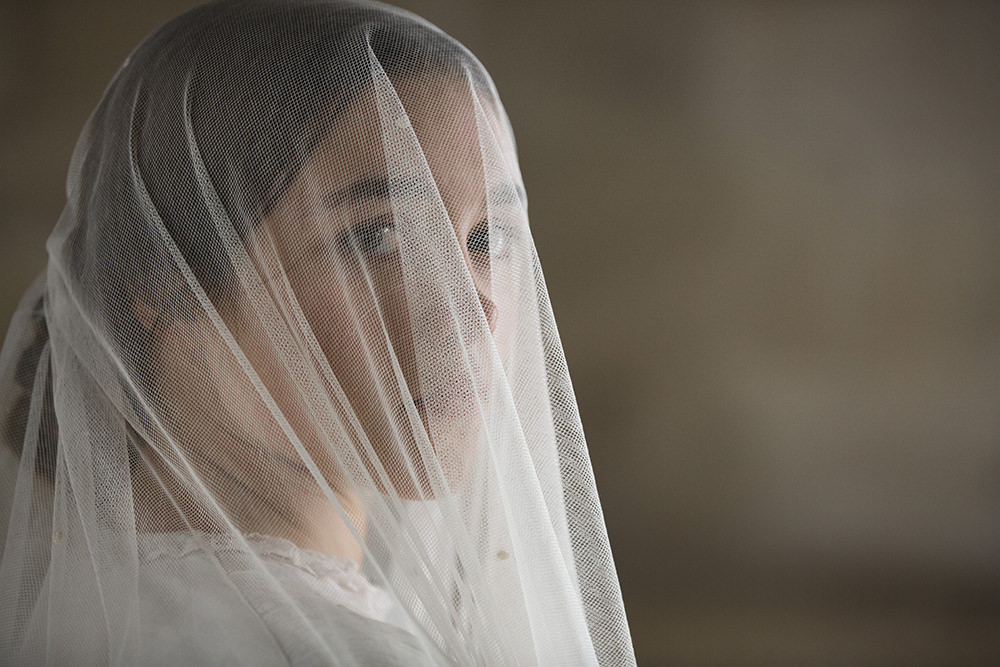Ari Wegner: The Kettering Incident to Lady Macbeth
Cinematographer Ari Wegner on her career, process, and the camera choices that informed The Kettering Incident and new feature Lady Macbeth.
When you watch something like The Kettering Incident, there’s a sense of unease that soaks the Tasmanian locations. Part of that is the story itself, part of that is the choice in directing.
But part of that is also through specific camera choices. They can make you feel a certain way, even if you don’t quite realise it’s happening.
This feeling is part of what Ari Wegner, the cinematographer on The Kettering Incident, aims to achieve.
“Cinematography is one part of a much bigger thing,” she says.
“A film gets made with all these different elements that hopefully come together,” whether that’s costume, or production design, or lighting.
“If you’ve got a strong director with a singular vision, ideally all of those elements will be influenced by that and we can all sit down together and talk about how each department can complement each other, or maybe it’s more interesting that they’re out of alignment.”
When it comes to cinematography, she says sometimes you want an audience to notice the camera choices, but other times “you want to ride the line. You want to be as subtle as possible so it’s not too glaringly obvious, but still for people to feel it.

The Kettering Incident / Ben King
“[Because] as an audience, you’re wanting to understand things.”
For example, in The Kettering Incident Wegner has said how they would create tension through subtle camera moves, like keeping the frame slightly below eyeline, or pushing slowly into a shot.
In Wegner’s latest project Lady Macbeth, which releases in Australian cinemas on 29 June, they wanted to enhance the feeling that the young bride Katherine (Florence Pugh) is trapped.
Based on the 1865 Russian novel (as opposed to the Shakespearean Lady Macbeth), it follows a rebellious woman who’s sold into a marriage with a middle-aged man and becomes drawn to a worker on the estate.
“She’s trapped in the house, she’s trapped in these clothes, she’s trapped in a marriage and I wanted to underline that with the visuals to really feel something emotional about it,” Wegner says.
“So they’re very static, locked frames. There’s no panning or tilting. It’s really like she’s trapped in the frame as well. And then when she’s able to have some freedom, have some agency to move outside the house… the camera takes on that feeling that she’s got - to be moving.”
It was also about creating an empathetic connection between Katherine and the viewer, so you become conflicted about her actions and your feelings toward her.
“[But] maybe you weren’t aware that decisions were being made camera-wise to have this effect on you. Hopefully you don’t feel that.”
Wegner was always drawn to photography and writing, but it wasn’t until she was studying film at VCA and began crewing and shooting shorts that she realised there was a career in a combination of the two.
 Lady Macbeth / 20th Century Fox
Lady Macbeth / 20th Century Fox
“By the end of the first year I really gravitated toward the camera. That’s what I enjoyed the most, that’s where my gut instincts led to the most satisfying results,” she says.
So she followed that instinct.
What it led to was not so much a ‘big break’, but a series of projects – each that presented a new challenge and gave Wegner a chance to prove herself in a different way.
“I did a bunch of shorts, which did quite well, among them Night Shift,” she says of the short by New Zealand filmmaker Zia Mandviwalla, which was selected for the Cannes Film Festival in 2012.
“[Then in 2013] I did a film called Ruin with [producer] Michael Cody and [director] Amiel Courtin-Wilson.”
She had known Courtin-Wilson from Melbourne, where she had been working in the camera department on his feature film debut Hail.
2016 series The Kettering Incident took her into the world of high-end television and now Lady Macbeth marks her return to shooting features – this one filmed in England – all while continuing to work on shorts, such as Mirrah Foulkes’ Toronto-selected Trespass.
“Every time you’re just outside your comfort zone, which is where I love to work,” she says.
“I’ve been really blessed in that way to have those stepping stones.”
When Wegner signs onto a project, the process is always different – because the budget, location, style of director or script is always different. You never get a combination that’s the same.
“We start (with) the script and the director and those two elements are as broad as you could possibly imagine,” she says. “So everything’s a really unique situation.”
It usually begins with Wegner chatting to the director about how they like to work, what excites them, bores them, makes them stressed, what’s worked in the past, or if they want to try something different.
Then conversation moves to the script – what energy they want it to have and if there’s a specific visual style. This dictates her approach. So in some cases it might be more formal, with shot lists and storyboards. In other cases, such as with Ruin, it might be more fluid.
“The magic in Ruin and what makes that film amazing is that on any given day we didn’t know what might happen. And for some directors… that’s the best feeling in the world and for another director that might be the worst case scenario.”
Ruin also showcases just how technology has changed filmmaking.
“Something like Ruin we shot that on a [Canon] 5D which at the time was pretty decent. DSLR was just starting to be acceptable for a cinema film, although I guess it’s kind of been superseded.”
But she says they could never have created Ruin on any other camera. Because the DSLR was so light, it informed how they could work with the actors and the space they could shoot in. They could have minimal lighting, and multiple cameras with a few operators.
“That film wouldn’t have been that film if we shot on the best cameras that existed. And I think that film is perfect as [it is], rough around the edges – the imperfections are what’s so perfect about it. And that little several thousand dollar camera allowed you to capture that time, place and energy in a way that we couldn’t have done on another camera. Even quite a few years ago, because we had a really small budget, maybe we wouldn’t have even been able to make that film.”
So while on one hand Wegner is sad that film is increasingly not an option for projects anymore, purely because it’s expensive, “what digital has also done is it’s created a real democratisation of camera.”
“Maybe 15 or 10 years ago there was only a certain group of people that could afford to make a film. Now pretty much if you’ve got a phone you can make a film and sometimes that is the right format for [the story]. I’m not elitist about what is a superior format. It all depends on the project.”
Lady Macbeth releases in Australian cinemas on 29 June. The Kettering Incident is available on DVD and Foxtel.

What to read next
How director Jonathan Teplitzky’s love of photography led him into cinema and creating the likes of Churchill, The Railway Man and Gettin’ Square.
31 May 2017
Caris Bizzaca